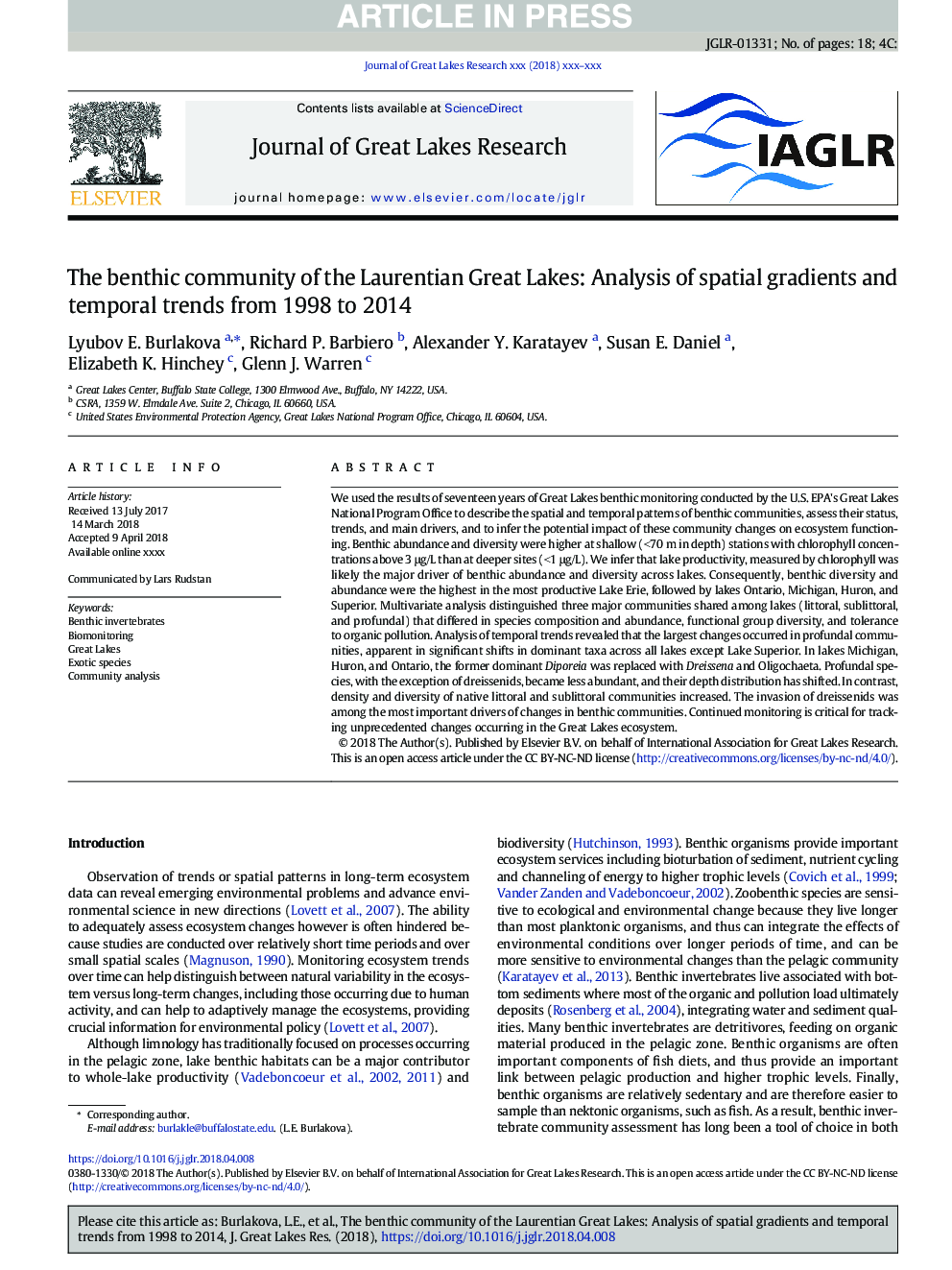| کد مقاله | کد نشریه | سال انتشار | مقاله انگلیسی | نسخه تمام متن |
|---|---|---|---|---|
| 8849068 | 1618514 | 2018 | 18 صفحه PDF | دانلود رایگان |
عنوان انگلیسی مقاله ISI
The benthic community of the Laurentian Great Lakes: Analysis of spatial gradients and temporal trends from 1998 to 2014
ترجمه فارسی عنوان
جامعه بنیادی دریاچه های بزرگ لورانتی: تجزیه و تحلیل شیب های فضایی و روند های زمانی از 1998 تا 2014
دانلود مقاله + سفارش ترجمه
دانلود مقاله ISI انگلیسی
رایگان برای ایرانیان
کلمات کلیدی
بی مهرگان بتنی، بیومونیتوری، دریاچه های بزرگ، گونه های عجیب و غریب، تجزیه و تحلیل جامعه،
موضوعات مرتبط
مهندسی و علوم پایه
علوم زمین و سیارات
علوم زمین و سیاره ای (عمومی)
چکیده انگلیسی
We used the results of seventeen years of Great Lakes benthic monitoring conducted by the U.S. EPA's Great Lakes National Program Office to describe the spatial and temporal patterns of benthic communities, assess their status, trends, and main drivers, and to infer the potential impact of these community changes on ecosystem functioning. Benthic abundance and diversity were higher at shallow (<70â¯m in depth) stations with chlorophyll concentrations above 3â¯Î¼g/L than at deeper sites (<1â¯Î¼g/L). We infer that lake productivity, measured by chlorophyll was likely the major driver of benthic abundance and diversity across lakes. Consequently, benthic diversity and abundance were the highest in the most productive Lake Erie, followed by lakes Ontario, Michigan, Huron, and Superior. Multivariate analysis distinguished three major communities shared among lakes (littoral, sublittoral, and profundal) that differed in species composition and abundance, functional group diversity, and tolerance to organic pollution. Analysis of temporal trends revealed that the largest changes occurred in profundal communities, apparent in significant shifts in dominant taxa across all lakes except Lake Superior. In lakes Michigan, Huron, and Ontario, the former dominant Diporeia was replaced with Dreissena and Oligochaeta. Profundal species, with the exception of dreissenids, became less abundant, and their depth distribution has shifted. In contrast, density and diversity of native littoral and sublittoral communities increased. The invasion of dreissenids was among the most important drivers of changes in benthic communities. Continued monitoring is critical for tracking unprecedented changes occurring in the Great Lakes ecosystem.
ناشر
Database: Elsevier - ScienceDirect (ساینس دایرکت)
Journal: Journal of Great Lakes Research - Volume 44, Issue 4, August 2018, Pages 600-617
Journal: Journal of Great Lakes Research - Volume 44, Issue 4, August 2018, Pages 600-617
نویسندگان
Lyubov E. Burlakova, Richard P. Barbiero, Alexander Y. Karatayev, Susan E. Daniel, Elizabeth K. Hinchey, Glenn J. Warren,
